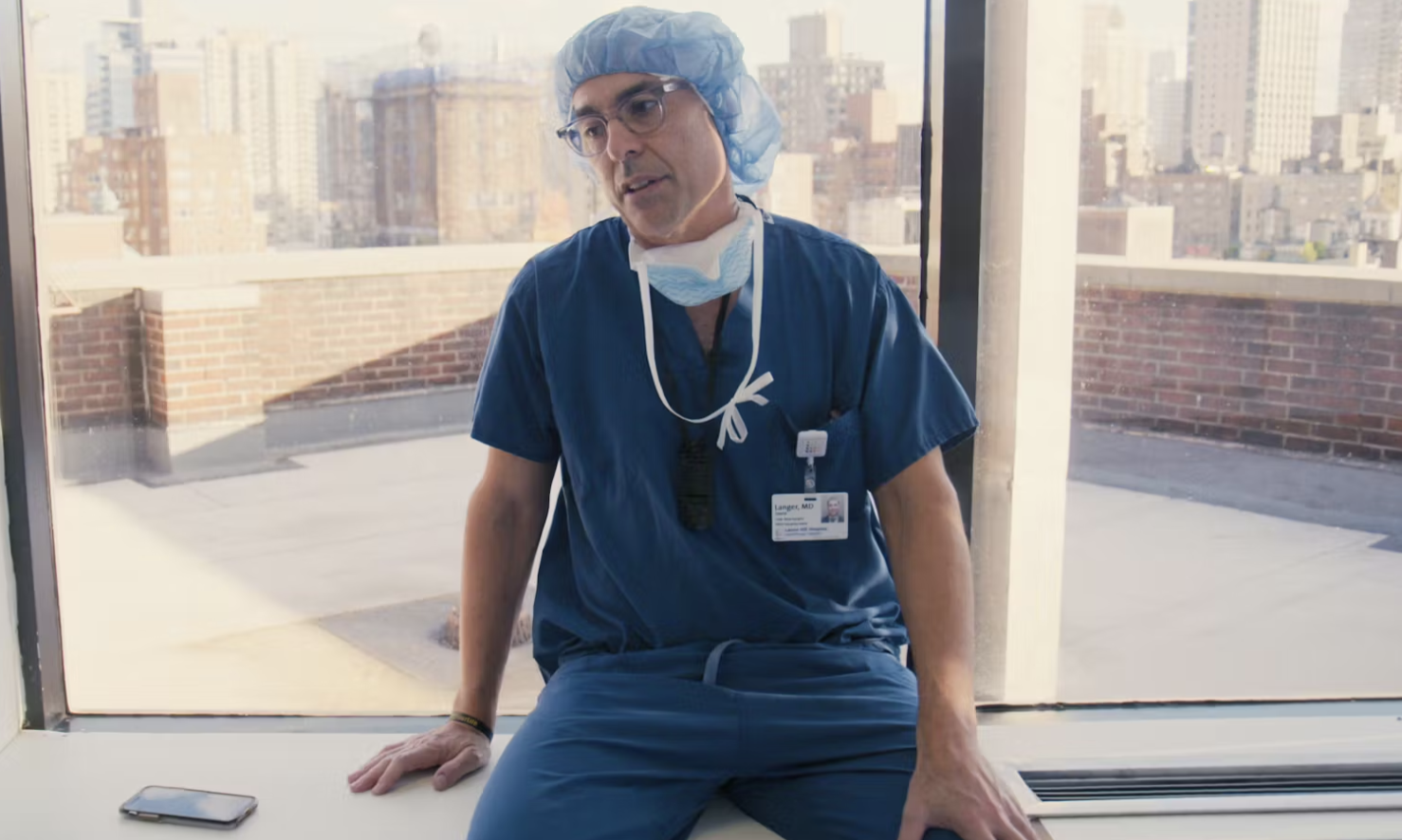What is an AI Scribe? [And is it Right for Your Practice]

Main image courtesy of Forbes.
Recently the healthcare field has seen a transformation in the wider acceptance of artificial intelligence assisting with clerical tasks. These AI assistants are known as AI scribes, and if this sounds intriguing keep reading because this article is discussing:
- What an AI scribe is
- How much AI scribes can cost
- The benefits of an AI scribe
- What alternatives there are to AI scribes
Although human scribes are still common in a variety of specialties, the U.S. healthcare system has seen an uptick in the broader use of AI scribes. But what is an AI scribe, and how can it potentially benefit your practice?
What is an AI scribe?
AI scribes are more common than you might think

An AI scribe is an application that doctors and healthcare professionals in all a variety of environments can easily download to their phone or tablet. There are lots of different scribe applications to choose from, so depending on the level of assistance you’re looking for, chances are there’s a good AI scribe out there for you. The applications rely on natural language processing and advanced algorithms to “listen” to the conversation during a patient encounter. As it’s listening, the application can also transcribe the conversation accurately in real time, and generate notes as it goes along.
Clinicians have found this very helpful, since it frees them up from having to take notes and fill in information in the patient’s EHR as the conversation progresses. It also eliminates the need to spend an hour (or more) in front of a computer at the end of the day charting or typing up notes, extending the time providers spend at work. Not having to create notes in real time or later in the day allows providers to be more present with their patients, and listen to their needs and answer questions. Having more time to spend with patients and cutting extra time spent on clerical tasks can help prevent providers from feeling burned out as well.
How much does an AI medical scribe cost? (Are there AI scribes that are free?)
One of the first questions clinicians want to know (besides how does an AI scribe help them) is how much it will cost. As we mentioned, there are lots of options for AI scribes out there, and they typically come on a subscription based payment platform. Most scribe companies also offer different tiers of service, and the higher the monthly premium, the more features you get or the more people you can have on the plan. Having different levels of AI assistance is a great idea, since it allows healthcare facilities to choose the level of service that suits their needs, and their budget, best.
Typically you can expect AI scribes to cost anywhere between $100-$150+ per month, but depending on the size of your facility and how many users need access, there are some ambient scribes that can cost $200 and up. If you’re not ready to add an AI scribe service to your monthly budget, then consider signing up for one with a free trial, or that offers a demo of their services. Some AI scribes have a free tier with limited features, but if that’s what works for you, then an AI scribe can cost you nothing.
Is an AI scribe HIPAA compliant?
In the digital age, it’s essential that AI assistance from scribes are HIPAA compliant. Data breaches to sensitive medical information are damaging to doctor/patient trust, and can incur financial penalties if it is found that proper HIPAA procedures were not followed with an ambient scribe.
Yes, there are AI scribes that are HIPAA compliant, like Playback Health, which takes the security of patient data seriously by ensuring proper data usage and encryption.
Is an AI scribe safe to use?
Yes, AI scribes are safe to use as long as the company behind them ensures that sensitive patient information is properly protected. Look for AI scribe companies that are:
- HIPAA compliant
- SOC 2 compliant
- And that encrypts data while it is both in storage and when it is synced
What are the benefits of an AI scribe?
There are a lot of ways an AI scribe can offer assistance

If an AI scribe sounds like something that your healthcare practice might be interested in, you should know about the other benefits of using AI to automate processes.
- Creates notes.
One of the major administrative burdens that typically falls on the shoulders of clinicians is the essential task of keeping patient notes. If they’re not doing it in the patient encounter, they have to enter the information later, typically after they're done seeing patients. And this can definitely lead to extra hours during the day. However, those clinicians that have started to use AI scribes find that they no longer need to worry about creating notes from scratch every time, which although it doesn’t take up too much time, can definitely add up over the course of a day.
Ambient scribes can take the information from its transcription and summarize it into a note following a format, ensuring the right information is exactly where it’s supposed to be.
- Helps foster a better clinician/patient relationship.
Providers want to make sure they’re listening to what the patient has to say, while also ensuring they’re typing in essential information as the encounter progresses. However this can distract them from paying complete attention to the patient, since they’re dividing it between transcribing the information and listening. Many clinicians find that doing this distracts them, and can prevent them from focusing on the patient.
With an AI scribe working to transcribe the encounter in real time, a clinician doesn’t have to worry about missing information, or mishearing something. Instead they can count on the accurate transcription that they can review after the patient has left. Patients tend to be more satisfied with their provider when they feel like their needs are being met and they have their full attention.
- Improves workflow and accuracy.
Although it doesn’t take an extremely long time to create a note and ensure it’s added to the patient's medical record, it does take time and can interrupt the flow of work as a provider moves from patient to patient. Taking this clerical task away from doctors and other healthcare professionals can streamline the workflow. Now, all that clinicians have to do is review the note for accuracy and ensure all necessary fields are properly filled out, then approve it.
And that’s the other great benefit of having an AI scribe help you out, they are very accurate. Ambient medical scribes are more accurate than their human scribe counterparts, and can transcribe faster too. This way, all the provider needs to do is ensure the note is correct before approving its sync with the EHR. The right information is included, and it goes to the right place, so the provider does not need to double check as they may have to with a human scribe.

- Reduces provider burnout.
Staying extra hours to ensure charts and notes are properly filled out can take its toll, and a lot of providers are dealing with a potential burnout situation. This can lead to more mistakes being made, and clinicians who are stressed from their job. One way to prevent this before it happens is to give the task of note creation to the AI medical scribe.
It can come as a relief to many clinicians to know that the AI scribe can accurately transcribe their conversation in real time, so they can focus on listening to their patients, and limit their distractions in the encounter. Afterwards, they just need to review the prepared note and then make any adjustments or additions, and it’s on to seeing their next patient! Having the note done and approved before providers take on their next task is a weight off their shoulders, and they can focus on their primary job—taking care of patients’ needs.
- Synced across devices.
Another plus about using an AI scribe to document encounters is that once the information is approved, it’s sent to the EHR and all devices are updated and synced with the new information. This means that any team member, from the front desk staff, to nurses, to other doctors can view the most up to date version of the EHR and see exactly what is on record for that patient.
- Reduces cost.
Healthcare facilities will need to find an ambient medical scribe that works with their budget, but it will not cost them nearly as much as a human medical scribe’s salary, or paying clinicians overtime. AI scribes also save money because they are more accurate than a human scribe, ensuring the information that’s entered is correct the first time, and does not need to be fixed later—or worse, create an issue that costs the facility money.
What can AI scribes not do?
While the technology is advanced, AI scribes are not ready to transcribe notes without a human reviewing them first. Although they provide better accuracy and transcribe faster than a human, the AI can still make mistakes, and because health notes need to be precise, a provider will still need to approve them.
What's the difference between a medical scribe and an AI scribe?
A human medical scribe is someone who is trained to assist a clinician with entering patient information in real time. They are in the room with the patient and doctor, either in person or virtually, and they are responsible for creating the note and getting all the information to the right places. Doing so allows the provider to focus their full attention on the patient. A medical scribe can also take care of other clerical tasks, such as getting test results, ordering additional tests with provider supervision, or scheduling follow up visits.
AI scribes can do all of this as well, and can not only seamlessly create notes and update EHRs, but they can automate the patient journey and provide all the information a clinician needs for the patient in real time.
- What's the highest paying virtual scribe salary? some text
- The salary of medical scribes, both in person and virtual, depends on where they’re located in the country and their level of expertise. Seasoned scribes will make more, but they can make anywhere from $9.86-$29.57 per hour.
Are you ready to try out a user-friendly, HIPAA compliant AI scribe?
If you’re interested in the latest technology designed to help practitioners of all fields be more present for their patients, then consider Playback Health’s ambient AI scribe. It offers hands-free transcription of patient conversations, automates note taking, transforms the patient journey into an automated process, and allows seamless syncing of medical documentation among team members. If this sounds like something your practice is interested in, then contact us!

The “Basilar Ganglia” That Wasn’t: Why Accuracy in Healthcare AI Matters More Than Ever

Why Dr. David Langer Believes Ambient AI Is the Future of Patient Communication

How Playback Pro Is Ushering in a New Era for Air Medical Transport



.png)

.svg)

